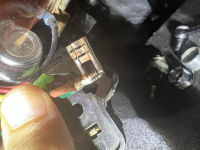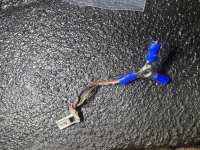- Joined
- Nov 3, 2003
- Messages
- 49,425
No, when you grounded the purple wire you were basically mimicking what it would do when it’s working correctly and you turn it to start.
And no, normal use the light is off and only lights up when you have an imbalance between the front and rear brakes which indicates something wrong.
The only other time it lights up is when you turn the key to start. It does not flash, it stays lit as long as the key is in the start position.
And no, normal use the light is off and only lights up when you have an imbalance between the front and rear brakes which indicates something wrong.
The only other time it lights up is when you turn the key to start. It does not flash, it stays lit as long as the key is in the start position.















